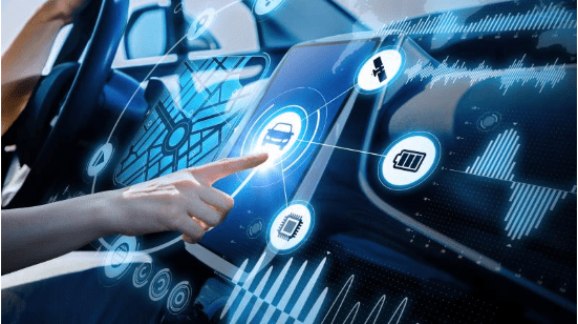CEI Comments on Incentives for Connected or Autonomous Vehicles

Introduction
On behalf of the Competitive Enterprise Institute (“CEI”), I respectfully submit these comments in response to the National Highway Traffic Safety Administration’s (“NHTSA”) and Environmental Protection Agency’s (“EPA”) Notice of Proposed Rulemaking on the Safer Affordable Fuel-Efficient Vehicles Rule for Model Years 2021-2026 Passenger Cars and Light Trucks (“NPRM”).[1]
CEI is a nonprofit, nonpartisan public interest organization that focuses on regulatory policy from a pro-market perspective.[2] This comment letter narrowly addresses a specific passage in the NPRM involving potential use of EPA’s off-cycle credit program to incentivize the development, production, and deployment of connected or autonomous vehicles.
Comments on Incentives for Connected or Autonomous Vehicles
In the NPRM, EPA states that it is considering a suggestion to eliminate the existing requirement that connected vehicle technologies “provide[] data sufficient to demonstrate the real-world emissions benefits of such technology” prior to awarding off-cycle credits.[3] This should be rejected for two separate reasons.
First, the entire purpose is of the off-cycle program is to provide manufacturers alternative means to show their technologies reduce carbon dioxide (“CO2”) emissions. The cornerstone for this approach is that “technologies must have a measurable, demonstrable, and verifiable real-world CO2 reduction that occurs outside the conditions of the Federal Test Procedure and the Highway Fuel Economy Test.”[4]
To be sure, some connected and/or automated vehicle technology applications—namely platooning—may improve fuel efficiency through improved aerodynamics and thus reduce CO2 emissions.[5] However, such applications to date are limited to heavy-vehicle prototypes beyond the scope of this rulemaking and in any event should be subject to verification prior to any award of off-cycle credits. Eliminating this requirement would allow manufacturers to receive credit for nonexistent adjustments.
Second, EPA’s example of “provid[ing] a set amount of credit, using the off-cycle menu, for any vehicle that can communicate basic safety messages (as outlined in SAE J2735) to other vehicles”[6] would directly contradict the U.S. Department of Transportation’s stated policy of remaining technology neutral with respect to connected and automated vehicle technologies.[7]
SAE Standard J2735 is technology-specific, referring to a wireless communications protocol known as dedicated short-range communications (“DSRC”).[8] DSRC-based connected vehicle technologies directly compete with cellular-based connected vehicle technologies,[9] and NHTSA has not proceeded with the previous administration’s proposed DSRC mandate.[10] Awarding an off-cycle credit for the mere installation of DSRC radios violates the administration’s pledge to technology neutrality by providing a technology-specific subsidy.
We urge EPA to preserve the existing off-cycle program requirement that manufacturers demonstrate CO2 emissions reductions prior to the award of credits, rather than picking technology winners and losers that have nothing to do with fuel economy or emissions.
Conclusion
We appreciate the opportunity to submit comments to NHTSA and EPA on this matter and look forward to further participation.
Respectfully submitted,
Marc Scribner
Senior Fellow
Competitive Enterprise Institute
[1]. Safer Affordable Fuel-Efficient Vehicles Rule for Model Years 2021-2026 Passenger Cars and Light Trucks, Notice of Proposed Rulemaking, NHTSA-2018-0067; EPA-HQ-OAR-2018-0283, 83 Fed. Reg. 42,986 (Aug. 24, 2018) [hereinafter NPRM].
[2]. See About CEI, https://cei.org/about-cei (last visited Oct. 22, 2018).
[3]. NPRM, supra note 1, at 43,463.
[4]. 40 C.F.R. § 86.1869-12(a).
[5]. See, e.g., How It Works, Peloton Technology, https://peloton-tech.com/how-it-works/ (last visited Oct. 22, 2018).
[6]. NPRM, supra note 1, at 43,463-64.
[7]. U.S. Department of Transportation, Preparing for the Future of Transportation: Automated Vehicles 3.0 iv (2018), available at https://www.transportation.gov/sites/dot.gov/files/docs/policy-initiatives/automated-vehicles/320711/preparing-future-transportation-automated-vehicle-30.pdf.
[8]. Specifically, J2735 is SAE International’s standard for the 5.9 GHz dedicated short-range communications for wireless access in vehicular environments message set dictionary, available at https://www.sae.org/standards/content/j2735_201603/.
[9]. See, e.g., Monica Alleven, Editor’s Corner—DSRC vs C-V2X: It’s one fine mess, Fierce Wireless (Mar. 19, 2018), available at https://www.fiercewireless.com/wireless/editor-s-corner-dsrc-vs-c-v2x-it-s-one-fine-mess.
[10]. The Fall 2018 Unified Agenda of Regulatory and Deregulatory Actions lists the January 12, 2017, notice of proposed rulemaking on Federal Motor Vehicle Safety Standard (FMVSS) 150–Vehicle to Vehicle (V2V) Communication under “Long-Term Actions” and that the next action is “Undetermined,” available at https://www.reginfo.gov/public/do/eAgendaViewRule?pubId=201810&RIN=2127-AL55 (last visited Oct. 22, 2018).